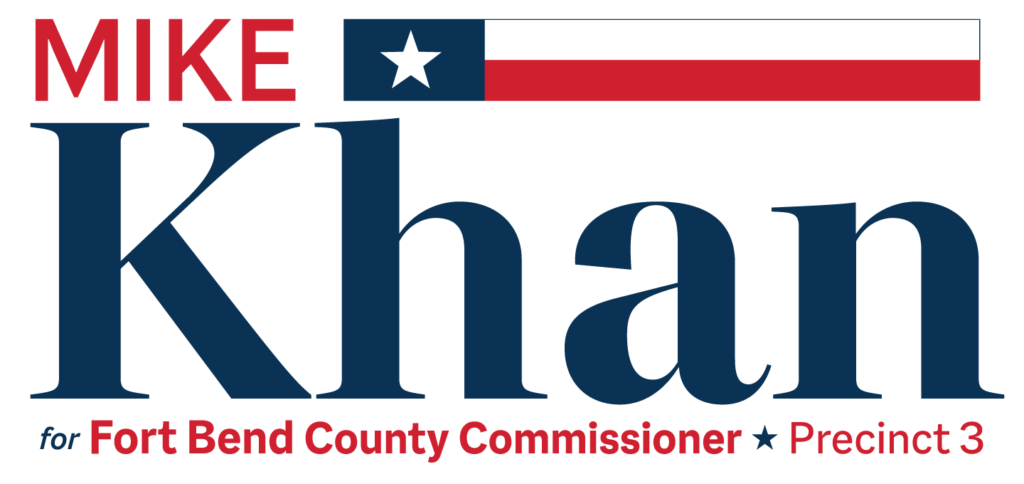precinct 3
issues in focus
Ready to Lead. Ready to Serve.

Infrastructure and Transportation:
- Comprehensive transportation plans: Address traffic congestion and road safety by developing transportation plans that cater to current challenges and anticipate future growth.
- Pursue grant opportunities and partnerships: Collaborate with federal, state, and regional agencies to fund improvements like road expansions, intersection upgrades, and maintenance projects.
- Expand public transportation options: Improve connectivity by encouraging the growth of efficient public transportation, such as bus and ridesharing services.
- Promote alternative transportation modes: Work with local businesses and municipalities to encourage walking, biking, and telecommuting to reduce traffic-related emissions and improve quality of life.

Flood Management and Resilience:
- Comprehensive flood management plan: Develop a plan that includes infrastructure improvements, better land-use planning, and effective emergency response strategies.
- Collaborate for funding and resources: Partner with regional and state agencies to secure funding for flood mitigation projects, such as levee improvements, detention basins, and drainage system upgrades.
- Green infrastructure: Encourage the use of eco-friendly solutions to reduce stormwater runoff and promote natural water filtration.
- Engage residents in flood preparedness: Educate residents about flood insurance and property protection measures to enhance community resilience.

Economic Development and Job Creation:
- Business-friendly environment: Streamline processes, reduce regulations, and offer incentives to attract businesses to Fort Bend County.
- Industry-specific training programs: Partner with local organizations to create training programs for in-demand jobs like healthcare, advanced manufacturing, and renewable energy.
- Encourage entrepreneurship: Provide resources to support the growth of local startups and small businesses.
- Invest in cultural initiatives: Showcase the county’s unique attractions, history, and natural beauty to stimulate the local economy.

Education, Youth Programs and Parental Choice:
- Strengthen public education: Advocate for increased funding, support initiatives to reduce class sizes, and promote innovative teaching methods.
- School choice: Support initiatives like charter schools, vouchers, and homeschooling to ensure parents have the freedom to choose the best educational environment.
- Early childhood education: Expand access to programs like pre-kindergarten and Head Start for a strong foundation for academic success.
- Youth engagement: Develop partnerships with local businesses and nonprofits to create programs that engage youth, build leadership skills, and foster civic responsibility.

Affordable Housing and Community Development:
- Affordable housing solutions: Work with non-profit organizations, developers, and financial institutions to offer a range of housing options, including affordable rental units and homeownership opportunities.
- Gentrification and displacement prevention: Introduce measures like inclusionary zoning, rent stabilization, and property tax relief to protect long-time residents.
- Support community development initiatives: Revitalize underinvested neighborhoods, improve public spaces, and promote economic growth while preserving community character and culture.

Public Safety and Emergency Services:
- Advocate for adequate funding: Prioritize the safety and wellbeing of all residents through budget allocations for law enforcement, fire, and emergency medical services.
- Address root causes of crime: Collaborate with community stakeholders to tackle issues like poverty, substance abuse, and lack of educational opportunities.
- Community policing: Promote initiatives that build trust between law enforcement and residents.
- First responder recruitment and training: Support diverse and well-qualified first responders who reflect the communities they serve and enhance emergency preparedness through investment in equipment and training.

Transparency and Accountability:
- Resident and stakeholder input: Ensure decisions are made with input from the community.
- Technology and communication: Improve communication and provide easily accessible information on county initiatives, decisions, and budgets.
- Open data policies: Allow residents to track progress on key issues.
- Public engagement: Encourage town hall meetings, public forums, and online platforms for residents to voice concerns, ask questions, and provide feedback.
- Performance metrics and evaluations: Establish metrics and evaluations to ensure county departments deliver high-quality services and meet community needs.

